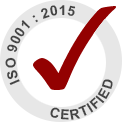SSE®
Self-Catalyzed Silicone Elastomer
Protective coating designed to stabilize semiconductor junctions and surfaces. For use in device technology of diodes, rectifiers, transistors and integrated circuits. Ideal also for potting sensitive electronic components.
UNIQUE ADVANTAGES
- Simple and economical to use – no catalyst needed
- Customized viscosities available
- Permits –65 °C. to 275 °C operation
- High voltage capability
- Electrical stabilization – minimizes leakage current and controls surface effects
- Good high frequency characteristics
- Mechanical stabilization against shock, vibration, acceleration
- Protection against weld flash and contamination
- Compatible with epoxy encapsulation
SSE – Self Catalyzed Silicone Elastomer
DESCRIPTION
SSE is a high viscosity silicone elastomer prepared from purified siloxane derivatives by novel condensation reactions. The chemical purity is monitored to maintain sodium (Na), potassium (K) and mobile ions at lower levels. The product is available in a pre-polymerized state, ready for application. It cures very quickly simply be heating without the addition of catalyst, due to the unique, self-catalyzing properties of SSE. The cured product is a white, resilient, dielectric material that is highly protective, heat stable, and waterproof. In addition, SSE serves as an excellent coating to obtain rapid dissipation of heat. The shelf life of SSE is approximately 6 months stored at 40 °F or below. Typical viscosity of uncured SSE is 250,000 cps. Customized viscosities are available from 100,000 to 400,000 cps.
PROPERTIES:
| Viscosity | 250,000 cps |
| Flexibility | To –75 °C. |
| Heat Resistance | Up to 300 °C. |
| Specific Gravity | 1.3 |
| Bulk Resistivity | 5 x 1014 ohm-cm |
| Dielectric Constant | 3.5 (1mc.) |
| Dielectric Factor | 1.5 x 10-3(1 mc.) |
| Dielectric Strength | 550 volts/mil |
| Thermal Conductivity | 5.5 x 10-4cal/cm/sec/cm2/°C |
| Durometer Shore A | 45 |
| Shelf Life @ 40 °F or lower | 6 months |
APPLICATION:
FOR SEMICONDUCTOR USE – Application is easily made by means of transfer dipping. An air oven is used to cure SSE after it is applied to the semiconductor devices. The recommended curing temperature is 200 °C. for 4 hours, preceded by 1 hour at approximately 75 °C. Longer curing periods are beneficial and desirable. To stop the flow or drip after applying SSE the coated devices should be set immediately upon a hot plate (100 °C.) At this temperature SSE starts to set quickly, and the flow virtually ceases.
FOR POTTING ELECTRONIC COMPONENTS – Many sensitive electronic components and circuit modules are usually potted with SSE either by transfer, dipping, or by vacuum impregnation. The latter method for encapsulating is desirable for irregular shaped bodies to insure elimination of trapped air. The best procedure for vacuum impregnation requires that the electronic parts and SSE be placed in a vacuum chamber and evacuated. The electronic parts can then be lowered and completely immersed in SSE while still under vacuum. The vacuum is finally broken and the parts are removed and allowed to drain. The SSE coated parts are cured in an air oven at 200 °C for at least 4 hours. The curing may also be performed at a lower temperature (160 °C.) but for a longer period of time.

